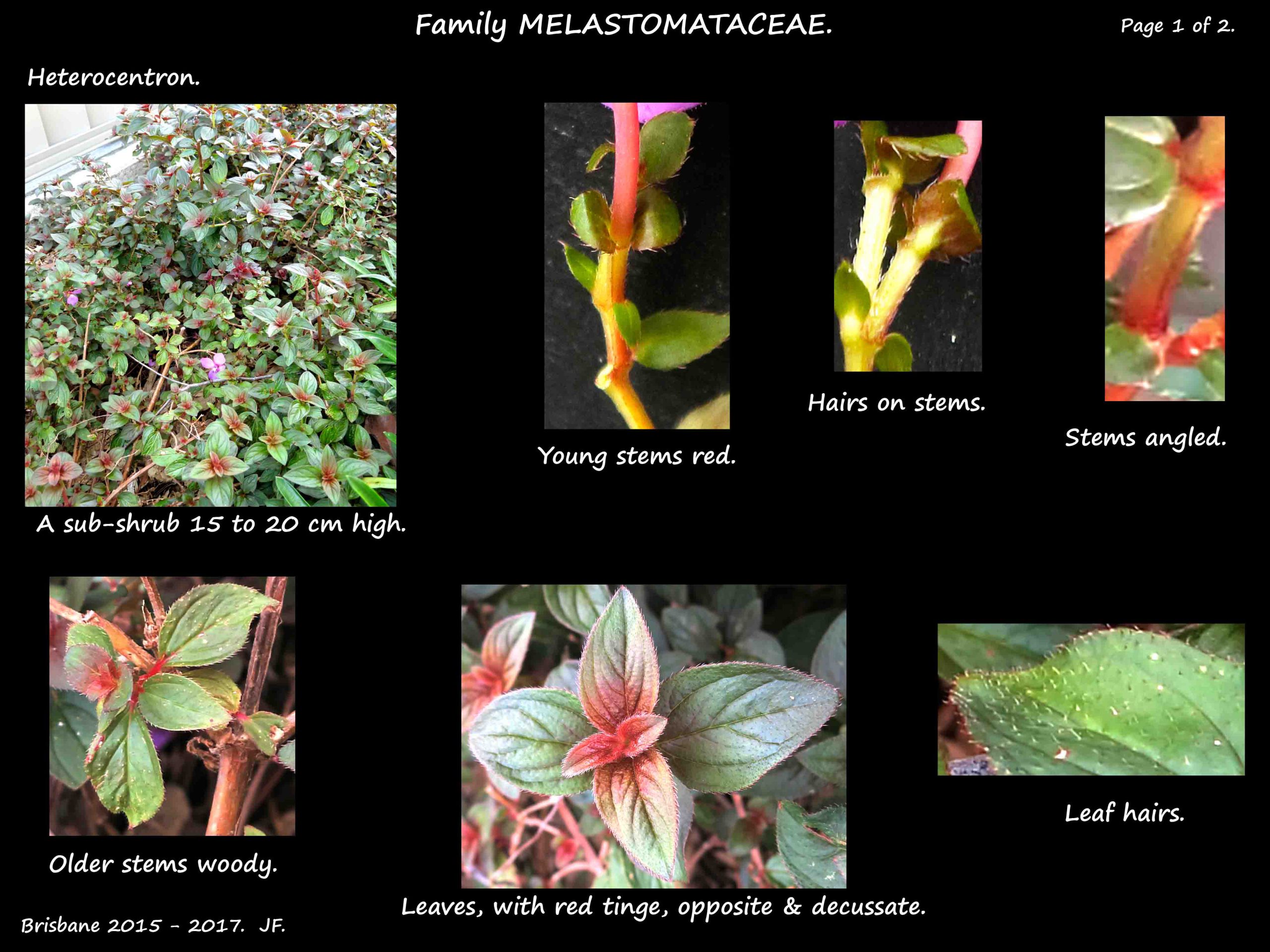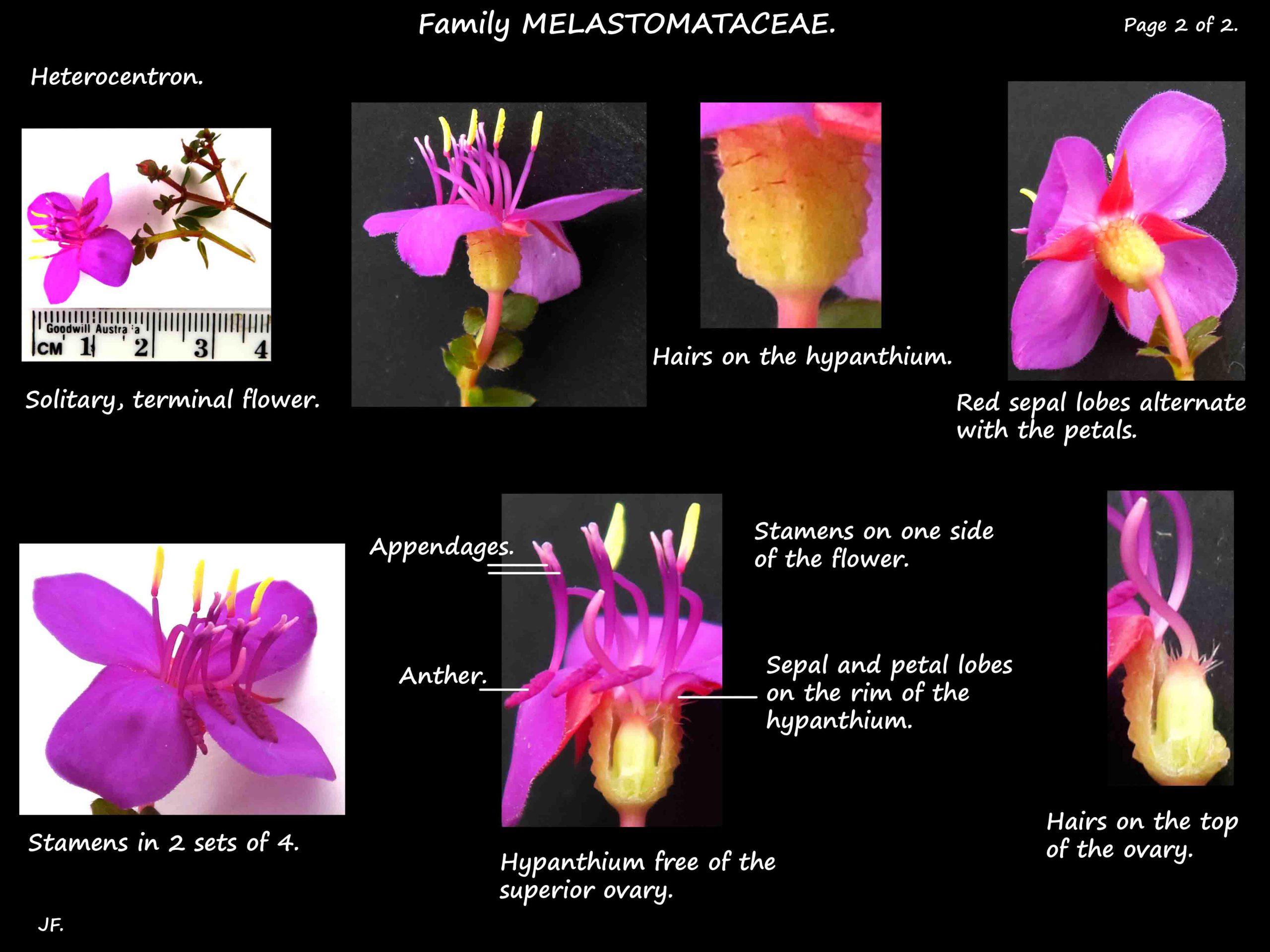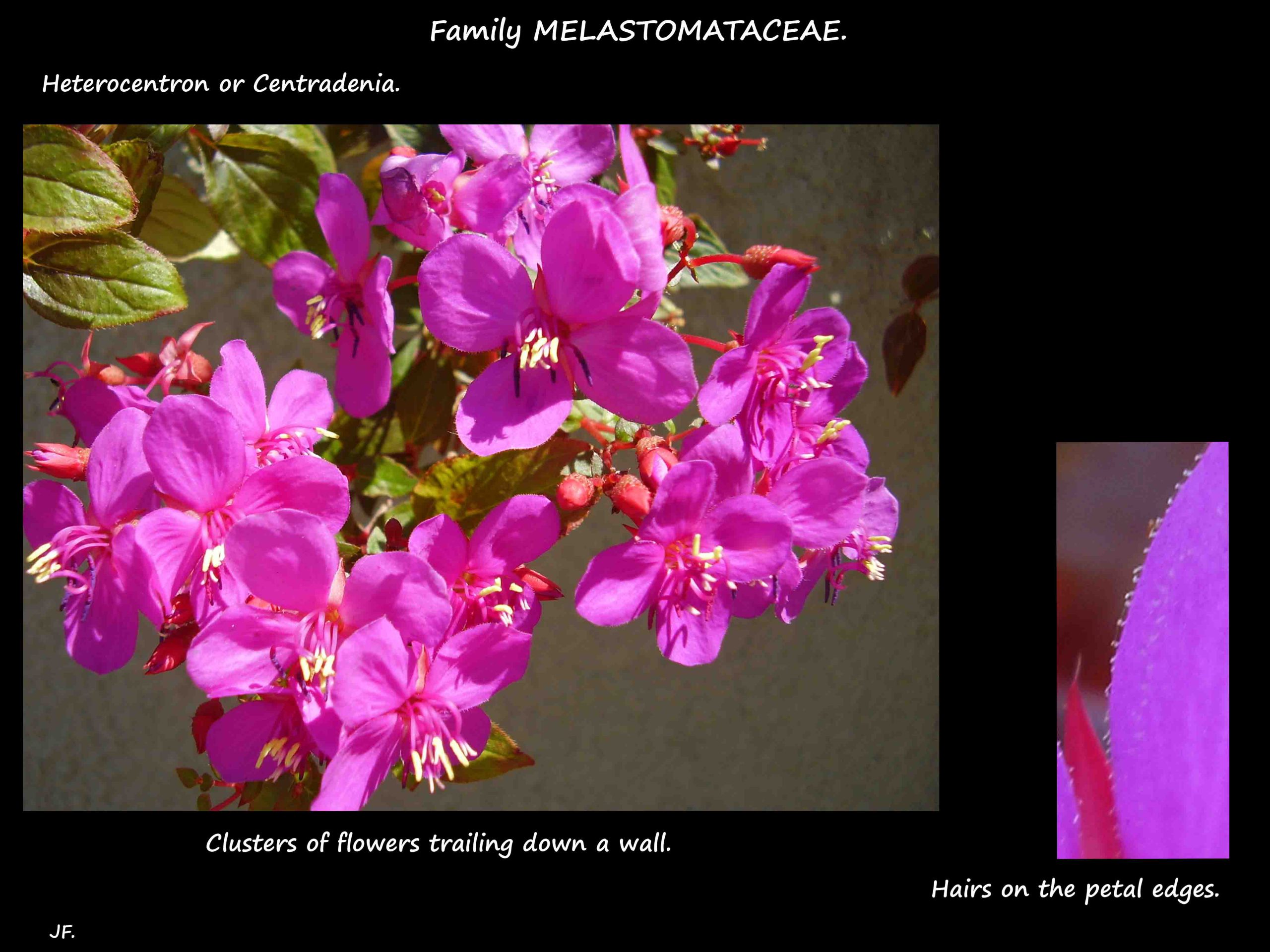Heterocentron.
There are 27 or 28 species and some are used as ornamentals.
They range from ground covers to shrubs up to 1.5 m high.
The red stems are 3 or 4 sided and have some hairs.
The small leaves, on petioles, are lanceolate to heart-shaped.
They may have a red or purplish tinge.
There are short hairs on the blades and those on the underside may be glandular.
There are 3 to 15 prominent veins.
Flowers, around 2.5 cm wide, can be solitary or in branched clusters.
The hypanthium may have glandular hairs.
The 4 petals can be pink, white, rose or magenta.
There are hairs on the petal edges.
There are 8 stamens in 2 sets of 4.
The longer 4 stamens have an appendage from the connective tissue between the anther sacs.
There are also 2 smaller appendages.
The other 4 stamens are shorter and the anther appendages are much smaller.
The small, superior ovary is free of the hypanthium.
The are often hairs, that may be glandular, around the top.
The fruit are capsules with 4 chambers.
The sepals persist on the fruit.
Heterocentron elegans.
One of the plants known as ‘Spanish Shawl’.
They are small shrubs up to 10 cm high with a spread of 1 m.
The older stems are woody.
The opposite leaves are ovate to oblong and 1 to 2 cm long by up to 1.5 cm wide.
They often have a purplish tinge and the tip is pointed.
There are 3 prominent veins.
There are long, glandular hairs on the leaves.
The solitary, 2.5 cm wide flowers, are on hairless stalks.
The hypanthium and calyx lobes have 1 – 2 mm long glandular hairs.
Petals are purple, mauve or magenta.
J.F.




